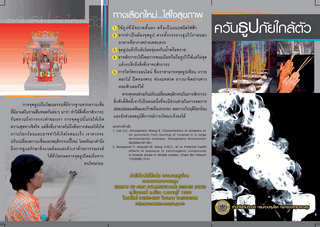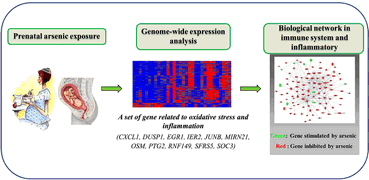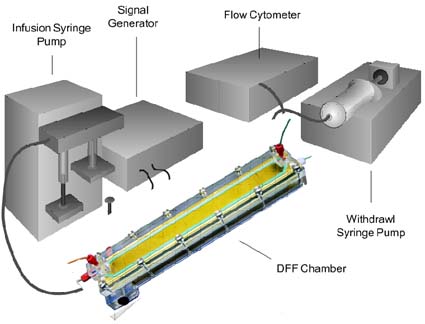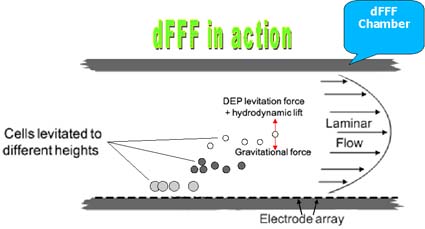Research Activities
1. Effects of Environmental Pollutants and Industrial Chemicals as Modifiers of Physiological and Pathological Status
The project broadly aims to evaluate the possible harmful effects of environmental pollutants and industrial chemicals on health. Two types of studies have been initiated:
- Study in animal model system, in which animals are exposed to various levels of chemicals over a period ranging from acute to subchronic study. Effects on hepatic biotransformation system leading to activation and inactivation of chemicals are evaluated under various pathological conditions of the host.
- Assessment of the possible harmful effects on human health by studying the relationship between the extent of exposure, level of damage and individual susceptibility through the use of biological markers.

• AIR POLLUTION
Genotoxic air pollutants have significant potential impacts on human health. Polycyclic aromatic hydrocarbons (PAHs) have been associated with lung cancer, while volatile organic compounds (VOCs), such as benzene and 1,3-butadiene, have been associated with leukemia incidence. These pollutants have many sources, including combustion, as well as production and use in the industrial sector.
Laboratory of Environmental Toxicology has conducted molecular epidemiological studies on the impacts on health in exposed populations, i.e. those living in Bangkok, through the use of biomarkers of exposure and early biological effects to assess health risks in these populations. Results showed that susceptible populations who are exposed to these genotoxic air pollutants from traffic-related sources (e.g. traffic policemen, street vendors and school children in Bangkok), from their work (e.g. petrochemical factory workers), or through other sources, such as from incense smoke from religious activities in temples, had PAHs, benzene and 1,3-butadiene exposure levels that were higher than in the respective control populations. It was also shown that the levels of associated biomarkers of early biological effects, e.g. DNA strand breaks and 8-hydroxydeoxyguanosine, were higher, while DNA repair capacity was lower in these exposed populations. The DNA damage that was detected was associated with the levels of exposure to these genotoxic air pollutants. This increased DNA damage and decreased DNA repair capacity may lead to an increased risk of cancer in these populations.
These study results led to policy decisions to monitor and measure levels of these genotoxic compounds by the Pollution Control Department, the responsible regulatory agency in Thailand under the Ministry of Natural Resources and Environment. Results from the incense smoke study, published in the journal of Chemical-Biological Interactions, and selected as one of the top three science-related news items in Thailand in 2008, also led to recommendations by the Department of Disease Control and the decision by many temples to reduce the use of incense sticks, or to use them in well-ventilated areas in order to reduce exposure levels for the general public.
• ARSENIC
Arsenic is an environmental pollutant that is classified as a human carcinogen by the International Agency for Research on Cancer (IARC). In Thailand, arsenic contamination in the environment is mainly as a result of tin mining, leading to contamination of food and drinking water. In animal experiments, arsenic has been shown to cross the placenta to the developing embryo and lead to cancer later in life (i.e. adulthood).
Laboratory of Environmental Toxicology has conducted research on the impacts of exposure to arsenic in pregnant mothers on gene expression in infants. Tissue samples were collected from mothers and newborns from Ronpibul district, Nakhon Sri Thammarat province, an area known to be contaminated with arsenic. Results showed that newborns from mothers in the study area had elevated levels of arsenic in their hair and nails, compared to newborns from a control site. We also found that differential expression of 11 genes were identified as promising markers for arsenic exposure. These genes are involved in apoptosis, cell signaling, inflammation and stress responses.
Additionally, levels of DNA methylation in the promoter region of the p53 gene were associated with levels of arsenic detected in the nail samples collected from the newborns. It is hypothesized that these changes in levels of DNA methylation and gene expression may lead to biological changes that manifest as disease later in life.
The study on differential expression of the 11 genes that were identified as promising markers for arsenic exposure was published in PLoS Genetics in 2007 and selected as one of the top fifteen research papers by the US National Institute of Environmental Health Science (NIEHS).
2. Impacts of pesticides on human health
The use of pesticides to improve agricultural yields continues to increase. Research on the organophosphates, e.g. paraoxon, has previously shown effects on the Type 3 muscarinic receptors of white blood cells. This led to the hypothesis that these compounds could possibly affect the brain, with potential impacts on learning, memory and movement.
Research in laboratory animals has also shown that exposure to the synthetic pyrethroids and arsenic may lead to increased susceptibility to malarial infection through effects on the immune system. The herbicide paraquat has been shown to cause Parkinson’s Disease-like symptoms, while glyphosate, which is used widely in Thailand, has been found to contaminate water and food and possesses estrogenic effects.
3. Impacts of Industrial Chemicals on The Environment and Health of Workers and Population in Industrial Communities
To address long-term health concerns and improve the quality of life of industrial workers and communities living in industrial areas, a project has been set up to study the impacts on the environment of potentially toxic chemicals in industry with regarding to their chronic effect on the health of workers and on people living near industrial areas.
The research includes;
• Monitoring of pollutant levels in the environment and workplace. Air and waste water samples as well as emission gases from selected factories involved in petrochemical and chemical industries will be collected and analysed for levels of volatile organic compounds (VOCs).
• Analysis of biomarkers of chemical exposure, biological effects and susceptibility as well as other indices of adverse effects on specific organ systems in the blood and urine of workers and population living in the industrial community.
With these research goals, it will be possible to evaluate the negative impacts of toxic chemicals on the environment and the risk to human health.
4. Detection of Environmental Toxicants by Dielectrophoresis (DEP)
Current methods for the detection of toxic substances in bodies of water, ground water and the public water supply rely upon specific laboratory tests and biological tests using aquatic organisms which seem to have some disadvantages. The rapid detection of environmental toxicants is a key aspect not only for basic research but also for environmental and industrial monitoring and the enforcement of environmental and health standards. The ability to conduct rapid tests on multiple samples in the field would therefore represent a significant step forward for environmental research and monitoring.
The project in collaboration with the University of Texas, M.D. Anderson Cancer Center, USA , aims at utilizing the technique of dielectrophoresis in detection of low levels of pollutants arising from industrial and agricultural sources in the water supply. Dielectrophoresis is the motion of panicles induced by non-uniform, oscillating electric fields. Subtle responses of cells to agents include alterations in membrane capacitance and membrane conductance which are two parameters easily assessed by dielectrophoresis. By applying this technique, it is hoped that a new, low cost and rapid method of detection of toxic chemicals in the water supply can be developed.
Dielectrophoresis, the translational movement of particles in a nonuniform AC electric field, has been used to study, manipulate and separate both particles and cells. This technique is applied as contact-free way to sense changes in the plasma membrane capacitances and conductivities of cells. The phenomenon depends on the capacitance, conductivity and size of the biological cells, the frequency of the applied field, and the electrical properties of the suspending medium. DEP has been shown to respond to minute changes in cell properties. However, DEP alone have some drawbacks such as time consuming, tedious work, and impractical for routine measurement. The developed dielectrophoresis field–flow fractionation or dFFF was established to solve said problems.
Conclusion: dFFF can quickly (15 min exposure) and sensitively (micro molar concentration) detect changes in dielectric properties of cells. For more details please click →Dielectrophoretic Field-Flow Fractionation System for Detection of Aquatic Toxicants
 Leave your message here!
Leave your message here!





